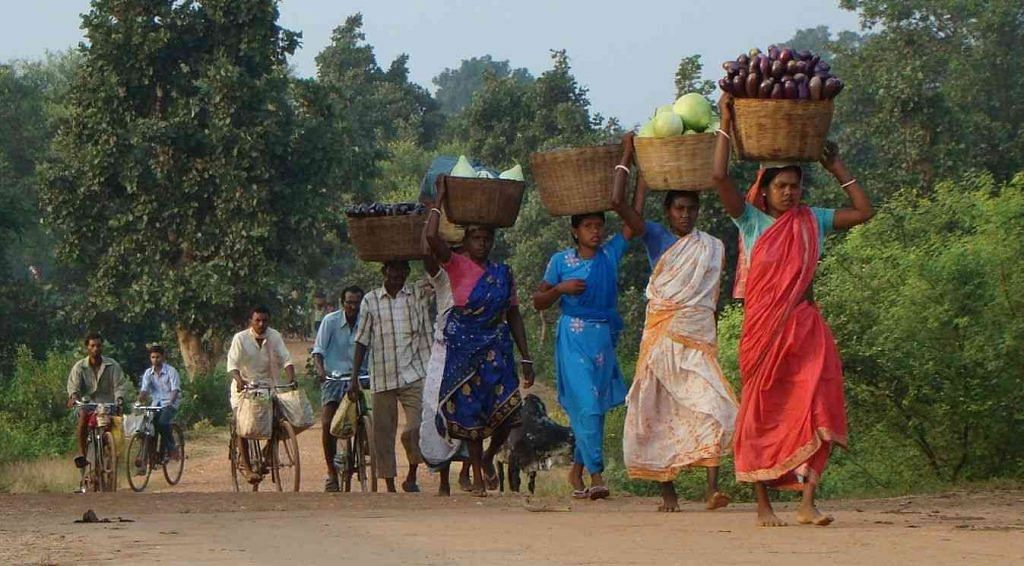Agriculture Minister Narendra Singh Tomar had told the Lok Sabha in July this year that the Narendra Modi government was “not in favour of continuing with” the Mahatma Gandhi National Rural Employment Guarantee Scheme for long. While MGNREGS’ target group is the rural poor, the Modi government’s larger goal is to eliminate poverty altogether, Tomar said.
But now, the rural development and agriculture ministry is preparing to ask for an additional Rs 20,000 crore for this scheme in the winter session of Parliament. This would be besides the Rs 60,000 crore already earmarked for the scheme in the 2019-20 Union Budget.
If this report is to be believed, Rs 50,000 crore from the original allocation has already been used, including the Rs 15,000 crore outstanding payment from last year. Rising labour demand for work under this flagship rural employment scheme is another reason why the government is seeking supplementary grants.
Also read: Naukri is the new mehngai but the opposition just doesn’t get it
Dependence on MGNREGS
Judging from a flurry of announcements relating to MGNREGS in the past few weeks, it would seem that the Modi government’s dependence on this scheme is rapidly growing. It believes this to be a stopgap solution for widespread rural distress and depressed rural employment.
MGNREGS has suddenly become both an indicator of rural stagnation as well as the proposed solution to it. Reports suggest that there is a “rising trend of” entry-level workers seeking employment guarantee under this scheme instead of regular jobs. This implies that the latter is just not available to this section of the population.
Meanwhile, another recent report says the Modi government plans to execute its other sanctioned schemes — the Pradhan Mantri Awas Yojana (PMAY) and improving water supply — using the MGNREGS. But there are inherent limitations in the MGNREGA guidelines: Labourers can be hired only for limited mandays (100 days per rural household) and only for the unskilled labour component of the programme.
Also read: Beyond MSPs & loan waivers, Modi govt must make agricultural market reforms its top priority
More cracks
The main criticism of this scheme has been that it provides low wages for the work done, lower than the minimum wages set by states. The guidelines on payment standards are set by a formula provided for in the MGNREGA. While a committee discussed a revision of the formula earlier this year, no change has been announced yet. Meanwhile, the legislation to implement minimum wages for unorganised labour has been passed via the Code on Wages 2019, which the Modi government has notified.
The average notified MGNREGA daily wage rate in India increased from Rs 207.62 in 2018-19 to Rs 210.86 in 2019-20 (a mere 1.56 per cent) while the average minimum agricultural wage rate increased from Rs 244.38 in 2018-19 to Rs 280.04 in 2019-20 (by 14.59 per cent).
At this point, the absolute difference prevailing across states between the minimum agricultural wage rates and the MGNREGS daily wage rate for 2019-20 looks like this. It ranges from a differential of Rs 201 in the Andamans (Rs 451 vs Rs 250) to a differential of Rs 187 in Nicobar, Rs 155 in Goa, Rs 75 in Bihar, Rs 113 in Gujarat, Rs 16 in Kerala, Rs 41 in Maharashtra, and Rs 10 in Uttar Pradesh. Where the difference is minimal, it could either be because both wage rates are high (Kerala) or both are low (Uttar Pradesh). The MGNREGA daily wage rate is highest in Haryana at Rs 284 and the minimum agricultural wage rate is Rs 339.
Wage rates for MGNREGA workers are notified and revised annually based on the Consumer Price Index-Agricultural Labourers (CPI-AL) set by the central government in accordance with the provisions of Section 6(1) of the MGNREG (2005) Act. The revised wage rates come into effect from 1 April of every financial year. There is currently a dissonance within the Modi government on which CPI to link the MGNREGA wage rate with, the CPI-AL or the CPI-Rural.
Also read: Modi govt wants to give jobs first and then develop skills through MGNREGA
Need of the hour
In an effort to dodge this issue, the Modi government announced in September that it would link MGNREGA wages under the Employment Guarantee Act to an updated inflation index, which will be revised annually. But does indexing these rates to inflation compensate for keeping the wages lower than the minimum wage rates?
Nobel laureate Abhijit Banerjee recently put raising wage rates under the MGNREGS second on his list of prescriptions for the Indian economy.
The government also announced that a casual labourer enrolled in MGNREGS would now get a Rs 250 daily allowance for skill training so that he or she could improve their employment opportunity and earn more as masons or plumbers or people skilled in crop storage.
Wage rates under employment guarantee schemes are also lower because MGNREGS wages are paid based on measurement of work done – wages are paid according to the piece rate pay system. Every state has established its Schedule of Rates (SoRs) on the basis of which the work output is defined and used to calculate the wages for MGNREGS beneficiaries.
Payments for hapless labourers working under this scheme are also routinely delayed by state governments. This PIB release of 7 January explains why: “The delay in payment of wages are due to implementation issues in the States which include inadequate staffing, non-timely recording and reporting of attendance, measurement, data entry, generation of wage list, Fund Transfer Order (FTO), etc”.
Also read: Tough message for Modi: Political winds are shifting, from nationalism to economy, jobs
Given the current extent of rural distress, all political parties should approve of an expansion of MGNREGS despite its faults, including delayed payments. But it will remain an investment tool for alleviating poverty, not for India’s economic recovery.
The author is a journalist and researcher, and is the founder editor of thehoot.org. Views are personal.
